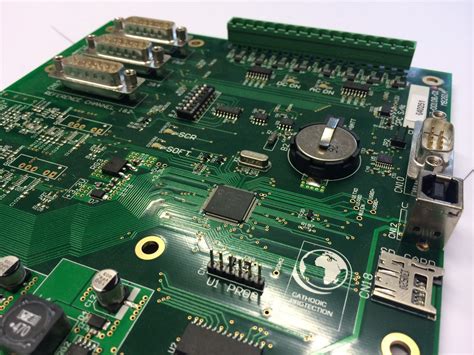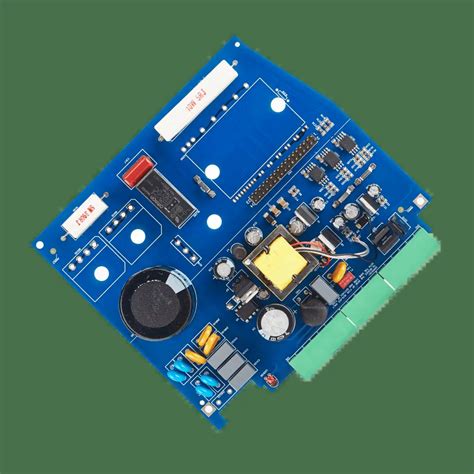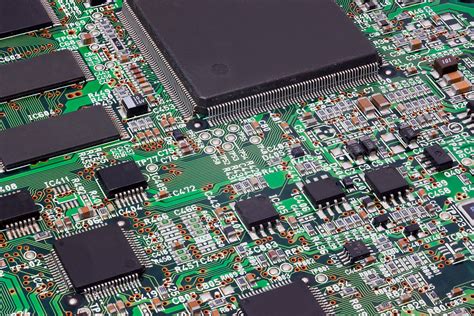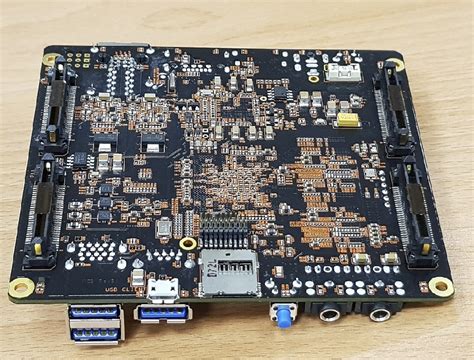Top Circuit Card Assembly Manufacturers Driving Innovation Today
Key Takeaways
The landscape of circuit card assembly (CCA), often referred to as pcb assembly or pcba, is rapidly evolving, driven by technological advancements and the demands of modern electronics. Manufacturers are increasingly prioritizing innovation to enhance the efficiency and quality of their production processes. Leading companies in this sector are adopting advanced techniques such as automated assembly, surface mount technology (SMT), and innovative inspection methods that ensure flawless production. These advancements not only streamline operations but also contribute to the creation of more compact and reliable electronic devices. Furthermore, with the integration of smart technologies like Artificial Intelligence and IoT, these manufacturers are able to improve process management, predictive maintenance, and supply chain logistics. As competition intensifies, circuit card assembly manufacturers must embrace these innovations to maintain their market position while simultaneously reducing costs and time-to-market for new products. This dynamic environment is setting the stage for a significant transformation in how electronics are produced and delivered globally.
Introduction to Circuit Card Assembly: The Backbone of Electronics
Circuit card assembly (CCA) is a critical component of modern electronics, serving as the foundation for various devices found in different industries, from telecommunications to automotive systems. At its core, pcb assembly involves the meticulous process of assembling electronic components onto printed circuit boards (PCBs), creating what is often referred to as pcba. These assemblies are essential for the functionality and reliability of electronic gadgets, making them indispensable in today’s technology-driven world.
The role of circuit card assembly cannot be overstated; it ensures that complex electronic systems work seamlessly. This process includes several stages such as surface mount technology (SMT), through-hole processing, and various testing methods to guarantee quality. As technology advances, so too do the techniques and materials used in pcb assembly, resulting in improved efficiency and performance characteristics.
Below is a table highlighting some key components commonly used in pcba:
| Component Type | Description | Typical Use Cases |
|---|---|---|
| Resistors | Limit current flow | Voltage dividers, signal processing |
| Capacitors | Store electrical energy | Power supplies, filtering |
| Integrated Circuits | Miniature circuits that serve multiple functions | Microcontrollers, amplifiers |
| Connectors | Join electrical circuits | Data transmission between devices |
As we explore the impact of these innovations on circuit card assembly processes and the future of electronics, understanding the significance of CCA becomes paramount. This overview sets the stage for a deeper examination into how manufacturers are not only meeting current demands but also pushing the boundaries of what’s possible in electronics manufacturing.
Key Players in the Circuit Card Assembly Industry
In the dynamic realm of electronics, pcb assembly serves as a crucial pillar, with several prominent manufacturers leading the charge. Companies in this sector, such as Foxconn, Jabil, and Flextronics, are not just providing traditional pcba services; they are reimagining manufacturing standards by integrating advanced technology and optimizing processes. These industry leaders employ innovative methodologies that enhance production efficiency and ensure high-quality outputs. For instance, automation and robotics have been increasingly adopted, allowing these companies to reduce errors and improve turnaround times. Furthermore, many of these manufacturers focus on sustainability, implementing eco-friendly practices that reflect a growing emphasis on responsible production within the electronics field. As they continue to push boundaries, their contributions shape the future of electronics, showcasing how circuit card assembly is more than just a manufacturing process—it’s an essential element driving innovation in technology.
Innovations Transforming Circuit Card Assembly Technologies
In the ever-evolving realm of electronics, circuit card assembly (CCA) technologies are witnessing transformative innovations that are reshaping the industry. One significant advancement is the integration of automation and robotic systems into pcb assembly processes, which have led to heightened efficiency and precision in production. These innovations allow manufacturers to achieve higher throughput rates while minimizing errors, thus enhancing overall product quality. Moreover, the adoption of advanced materials in pcba has resulted in lighter, more durable circuit boards capable of meeting the rigorous demands of modern devices. In addition, the implementation of smart manufacturing techniques enables real-time monitoring and data analytics, allowing manufacturers to respond swiftly to changes in production needs or quality control concerns. Furthermore, with the push towards sustainability, many circuit card assembly manufacturers are exploring eco-friendly practices and materials that reduce environmental impact while maintaining performance. These advancements not only drive efficiency but also play a crucial role in meeting consumer expectations for more reliable and sustainable electronic solutions. The combination of these factors leaves a profound mark on how future electronic devices will be designed and produced, signifying a bold leap forward for pcb assembly technologies.

Efficiency and Quality: Manufacturing Excellence in Circuit Card Assembly
The landscape of pcb assembly is characterized by a relentless pursuit of efficiency and quality. In today’s fast-paced market, manufacturers are keenly aware that consumers demand products that not only perform reliably but are also produced quickly. As such, leading circuit card assembly manufacturers are adopting advanced technologies to streamline their operations. Automated processes, for instance, play a crucial role in enhancing production rates and minimizing the occurrence of defects in pcba products.
Moreover, the integration of quality control measures throughout the manufacturing process ensures that each unit meets stringent standards before reaching the consumer. “Investing in state-of-the-art testing equipment is not just an option; it’s a necessity for any manufacturer aiming for excellence,” remarks industry expert Jane Doe.
To achieve these goals, many manufacturers utilize data analytics to monitor performance metrics continuously. This real-time feedback loop allows for immediate adjustments to be made in the assembly line, leading to significant operational improvements. Notably, keeping an eye on employee training and engagement is essential as well; skilled workers are critical players in maintaining high standards for both efficiency and quality in pcb assembly.
Finally, manufacturers who successfully blend technological innovation with workforce adeptness set themselves apart as leaders in the industry, ensuring their position at the forefront of circuit card assembly excellence. This dual-focus not only creates value for companies but also results in enhanced reliability for consumers—shaping the future landscape of electronics positively.
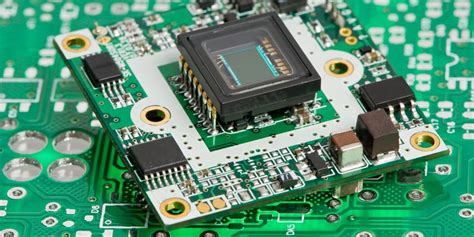
Future Trends in Circuit Card Assembly Manufacturing
As the demand for advanced electronics continues to grow, circuit card assembly (CCA) is undergoing significant transformations. One of the most notable trends is the shift towards automation. The implementation of robotics and artificial intelligence is enhancing the precision and speed of pcb assembly processes, minimizing human error and increasing production efficiency. Additionally, advancements in materials science are enabling manufacturers to explore new substrates and technologies, such as flexible pcba applications, which cater to a wider range of consumer electronics.
Moreover, eco-friendly practices are gaining traction within the industry. Manufacturers are tasked with finding sustainable materials that not only meet performance standards but also reduce environmental impact. This commitment to sustainability is influencing supply chain decisions and production methodologies, leading to an overall greener approach to circuit card assembly.
Another emerging trend is the integration of smart technology in CCA processes. Manufacturers are increasingly employing IoT (Internet of Things) devices that allow for real-time monitoring and data analytics throughout production lines. This innovation enables them to optimize workflows, predict potential bottlenecks, and ultimately enhance product quality.
Furthermore, as connectivity becomes more critical in various applications—from consumer electronics to industrial machinery—the need for robust pcb assembly solutions that support advanced functionalities such as 5G communication cannot be overstated. The ability of manufacturers to adapt swiftly to these evolving demands will likely define their success in a competitive market.
In summary, the future landscape of circuit card assembly manufacturing is poised for rapid evolution driven by automation, sustainable practices, smart technology integration, and responsive innovations that align with the growing complexity of electronic devices.
Challenges Facing Circuit Card Assembly Manufacturers Today
In the rapidly evolving landscape of electronics, circuit card assembly (CCA) manufacturers face a myriad of challenges that can impact both production efficiency and product quality. One significant hurdle is the increasing complexity of designs in PCB assembly, which demands a higher precision in manufacturing processes. As technology advances, the miniaturization of components has led to tighter tolerances, making it essential for manufacturers to adopt advanced techniques and equipment that can meet these specifications. Furthermore, supply chain disruptions, often exacerbated by global events, can hinder the availability of critical materials necessary for PCBA production. This not only affects timelines but also increases costs, challenging manufacturers to maintain competitive pricing while ensuring quality. Additionally, the ongoing pressure to integrate sustainable practices into operations compels manufacturers to rethink traditional methods and invest in eco-friendly materials and processes. As these industry players strive to overcome such challenges, their ability to innovate and adapt will be pivotal in shaping the future of circuit card assembly within a constantly changing market landscape. The pursuit of efficiency and quality will undoubtedly determine which manufacturers lead the charge in this important field.
Case Studies: Successful Manufacturers Leading the Way
In the competitive landscape of pcb assembly, several manufacturers stand out for their innovative approaches and commitment to quality. One such leader is Company A, renowned for its robust pcba solutions that integrate advanced technology with skilled craftsmanship. Their implementation of automation in the assembly process has significantly reduced lead times while increasing accuracy.
Similarly, Manufacturer B has embraced sustainability by developing eco-friendly materials for its pcb assembly processes, setting a new standard in the industry. They have also invested heavily in research and development, focusing on next-generation manufacturing techniques that not only boost pcba efficiency but also enhance the overall performance of electronic devices.
Another notable example is Company C, which has leveraged a data-driven approach to streamline operations. Their use of real-time analytics has enabled them to identify bottlenecks quickly, optimize resource allocation, and improve production workflows. This commitment to continuous improvement has made them a preferred partner for many leading tech firms.
Together, these manufacturers exemplify how innovation, quality, and responsiveness can redefine what is possible within the circuit card assembly realm, significantly shaping the future of electronics and driving industry standards higher.
Conclusion: The Impact of Circuit Card Assembly on the Electronics Landscape
The circuit card assembly process, particularly the domain of pcb assembly and pcba, plays a crucial role in the electronics industry’s landscape. As technology continues to advance, these manufacturing techniques serve as the cornerstone for ensuring quality, efficiency, and innovation in electronic products. Manufacturers are not only focused on producing high-quality circuit boards but are also implementing cutting-edge technologies that streamline production processes. This shift enhances the speed of development cycles while maintaining the integrity of components. The implications are far-reaching; as circuit card assembly continues to evolve, it directly influences product performance and reliability across a myriad of devices, from consumer electronics to complex industrial systems. Moreover, the integration of automation and smart manufacturing practices has intensified competition among manufacturers, pushing them to rethink traditional approaches to assembly. This dynamic landscape ultimately shapes how we interact with technology, making it essential for industry leaders to remain adaptable and forward-thinking in their strategies. Thus, the impact of circuit card assembly not only transforms manufacturing processes but also heralds advancements that define our electronic future.
Conclusion: The Impact of Circuit Card Assembly on the Electronics Landscape
The significance of circuit card assembly (CCA) within the broader electronics landscape cannot be overstated. As we have explored, pcb assembly processes are integral to the creation of reliable electronic devices, serving as the foundation upon which countless innovations are built. The leading pcba manufacturers are not only enhancing their manufacturing capabilities through advanced technologies but are also addressing critical challenges in efficiency and quality assurance. By adopting cutting-edge techniques such as automation and real-time data analytics, these manufacturers are reshaping production lines and improving output consistency. Moreover, their commitment to sustainable practices is further shaping industry standards, making them pivotal in fostering environmentally responsible manufacturing methods. As we look to the future, the advancements in pcb assembly will continue to impact how devices are designed and produced, ensuring that electronic products remain at the forefront of technological progression. The innovations spearheaded by top-tier circuit card assembly manufacturers will undoubtedly play a crucial role in defining the next generation of electronics.
FAQs
What is PCB assembly?
PCB assembly, or pcba, is the process of fitting electronic components onto a circuit board, which is a crucial part of electronics manufacturing.
Why is circuit card assembly important?
Circuit card assembly is important because it serves as the backbone of modern electronics, allowing for the integration of increasing complex electronic functions in compact formats.
Which manufacturers are leading in PCB assembly technology?
Some of the top manufacturers are recognized for their innovative approaches in pcb assembly, enhancing both quality and production speed.
What innovations are shaping PCB assembly today?
Innovations like automation, advanced materials, and precision manufacturing techniques are revolutionizing pcba, making processes more efficient and reliable.
How do manufacturers ensure quality in PCB assembly?
Manufacturers implement stringent quality control measures at every stage of the pcb assembly process to ensure that final products meet international standards.
What challenges do PCB assembly manufacturers face?
Challenges include managing supply chain disruptions, keeping up with rapidly changing technologies, and maintaining cost-effectiveness while ensuring high-quality standards.

